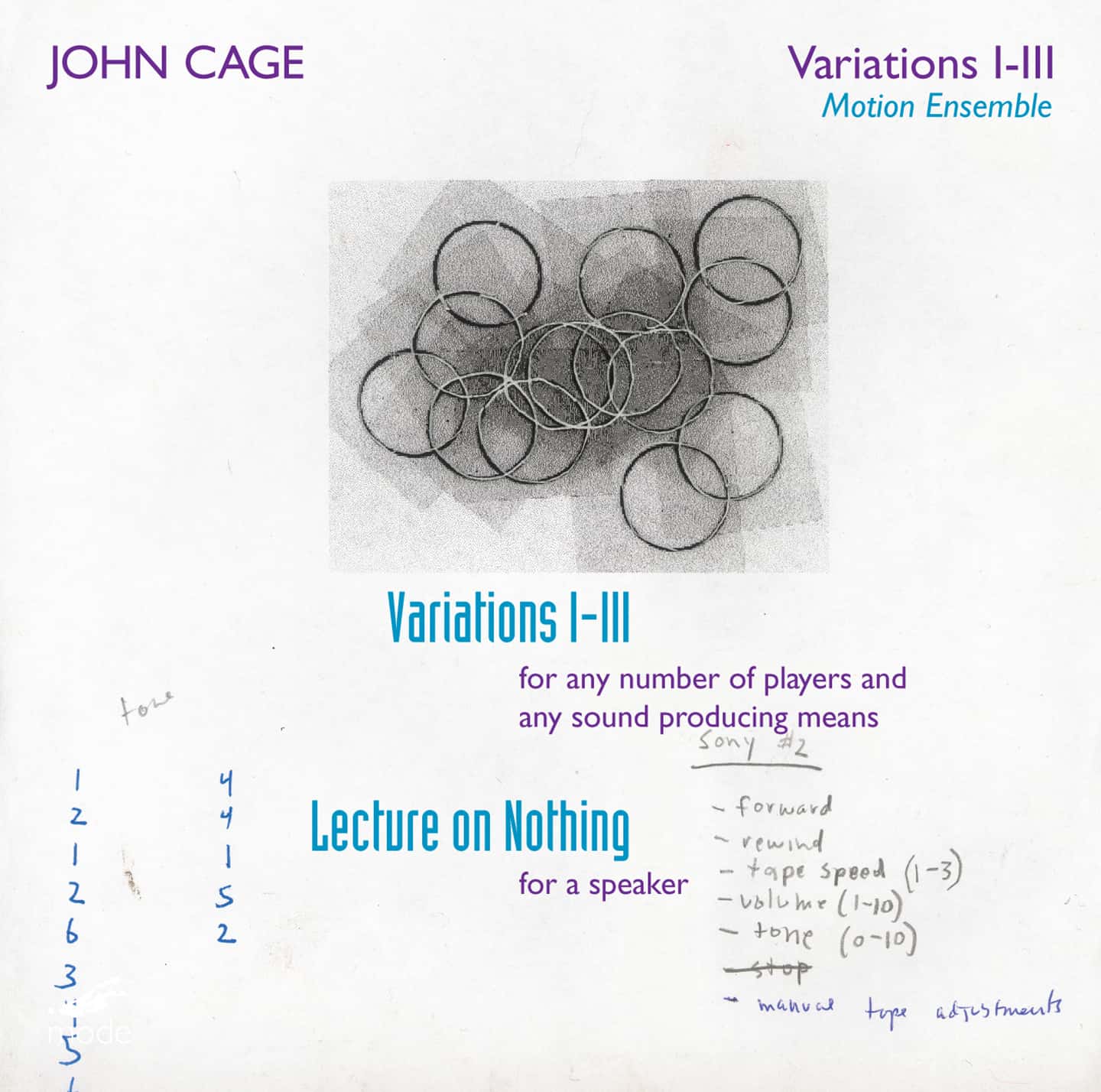VARIATIONS I (1958) (20:03)
for David Tudor, on his birthday (Tardily)
Curtis Dietz, trumpet
Nadia Francavilla, violin
D’Arcy Philip Gray, percussion
Richard Hornsby, clarinet
Andrew R. Miller, double bass
Gina Patterson, horn
Helen Pridmore, prepared piano
VARIATIONS II (1961) (29:48)
for any number of players and any sound producing means
with LECTURE ON NOTHING (1959) for voice
played simultaneously
Nadia Francavilla, prepared & amplified violin
D’Arcy Philip Gray, percussion
Andrew R. Miller, prepared & amplified double bass
Helen Pridmore, voice
VARIATIONS III (1962-63) (20:20)
for one or any number of people performing any actions
John D. S. Adams, D’Arcy Philip Gray, Andrew R. Miller, electronics
Motion Ensemble
John Cage’s Variations are from his most experimental period. They are graphically notated pieces which allow the performers to create their own scores within specific guidelines.
Variations I, II and III are scored for any number of players and any sound producing means. The goal of this project is to produce a document in sound of Cage’s musical philosophy, which allows for aesthetics that are rather independent of those in traditional western music.
These works are conceptually similar, all based on a series of abstract drawings created by the performers. Made according to the composer’s instructions regarding specific chance operations. From the drawings, the performer takes careful measurements and uses this information as the beginning of a performance score.
Each piece each is presented here in a very different manner. The realization of Variations I uses traditional instruments in combination with typical “Cagean” toys and gadgets (e.g. whistles, squeaky toys, etc.) that were common to many Cage-supervised orchestra pieces.
Variations II introduces the idea of simultaneous performance with the addition of Lecture on Nothing (as an “instrument” for the Variations II score) as well as featuring extensions of the traditional violin and double bass sounds.
Finally, Variations III uses only electronic instruments to bring the spectrum of sounds as far from the traditional instruments as possible.
D’Arcy Philip Gray was a musician for The Merce Cunningham Dance Company, adding an authoritative stamp to these recordings. He states: “Cage’s Variations pieces have been part of my life since 1995 when I first performed Variations II as part of a Merce Cunningham “Event” in Paris…in the months after the Paris performance, I began to explore the series further, talking with David Tudor about his experience with the pieces…the pieces to me have been a powerful educational experience, giving me the opportunity to examine Cage’s philosophy in depth in the context of live performance.” John D.S. Adams worked with David Tudor and continues to experiment with Tudor’s techniques of live electronics.
THE PERFORMERS
MOTION ENSEMBLE is a group based in New Brunswick, Canada. Their repertoire is an eclectic mix of contemporary classical and experimental music, often utilizing electronics, improvisation and visual media.

